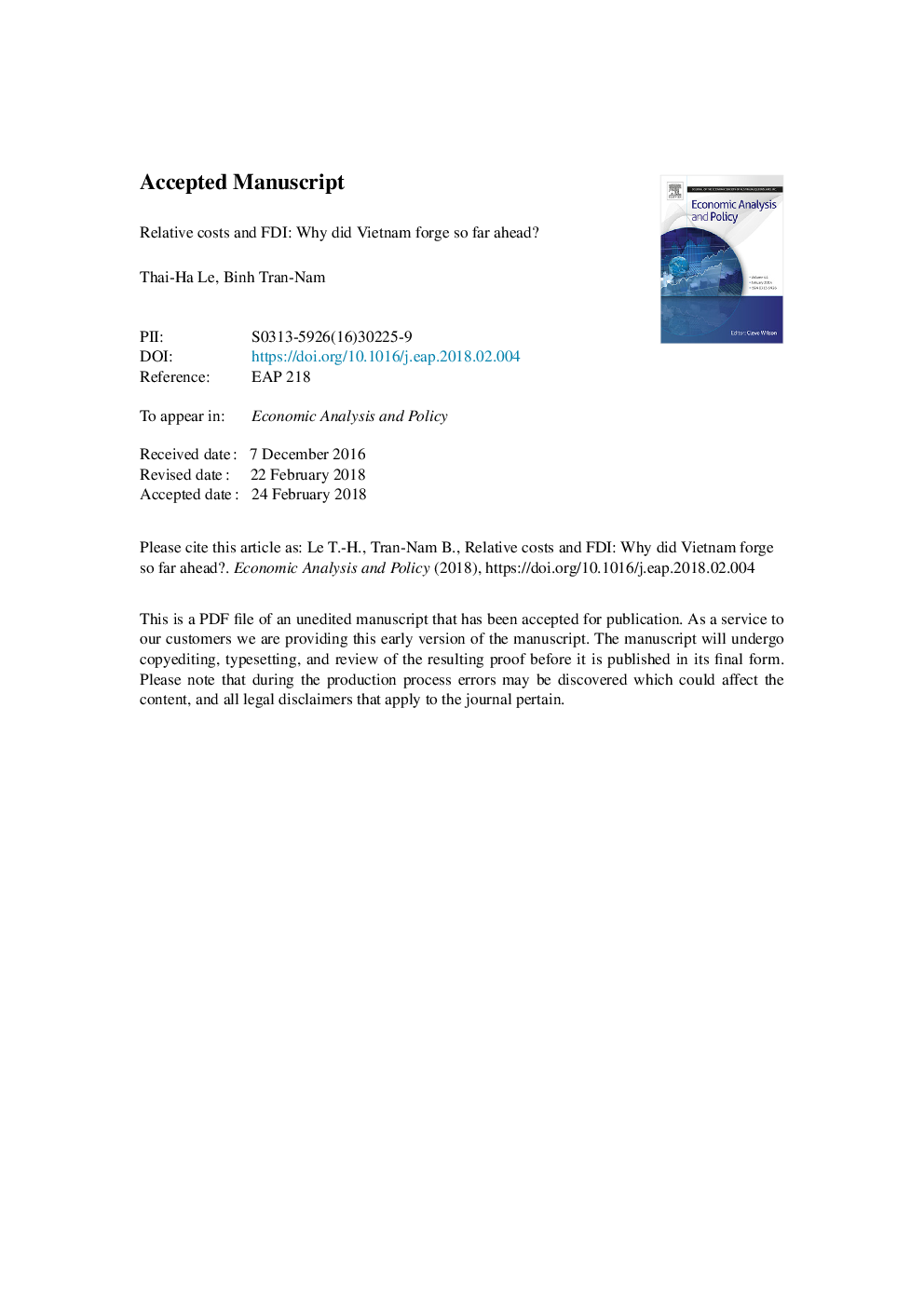| Article ID | Journal | Published Year | Pages | File Type |
|---|---|---|---|---|
| 7346463 | Economic Analysis and Policy | 2018 | 47 Pages |
Abstract
Foreign direct investment (FDI) into Southeast Asia has grown at impressive rates in recent years, with Vietnam exhibiting the fastest growth rate in the region. There are a growing number of studies that have explained FDI inflows into Vietnam both at the macro and the provincial levels. This study builds on this line of research by investigating the role of relative wages and relative productivity of Vietnam vis à vis other countries in the region, which hold similar locational advantages like Vietnam. The underlying premise is that a multinational corporation (MNC) has a choice between investing in two similar countries and chooses one country (Vietnam) rather than the other based on relative costs and benefits. Using a panel dataset spanning from 2000 to 2015, the study finds that during the recent years of transition, high level of FDI inflows into Vietnam could be explained mainly by the relatively skilled workforce, combined with low wages as compared to her neighboring countries in the region.
Related Topics
Social Sciences and Humanities
Economics, Econometrics and Finance
Economics and Econometrics
Authors
Thai-Ha Le, Binh Tran-Nam,
